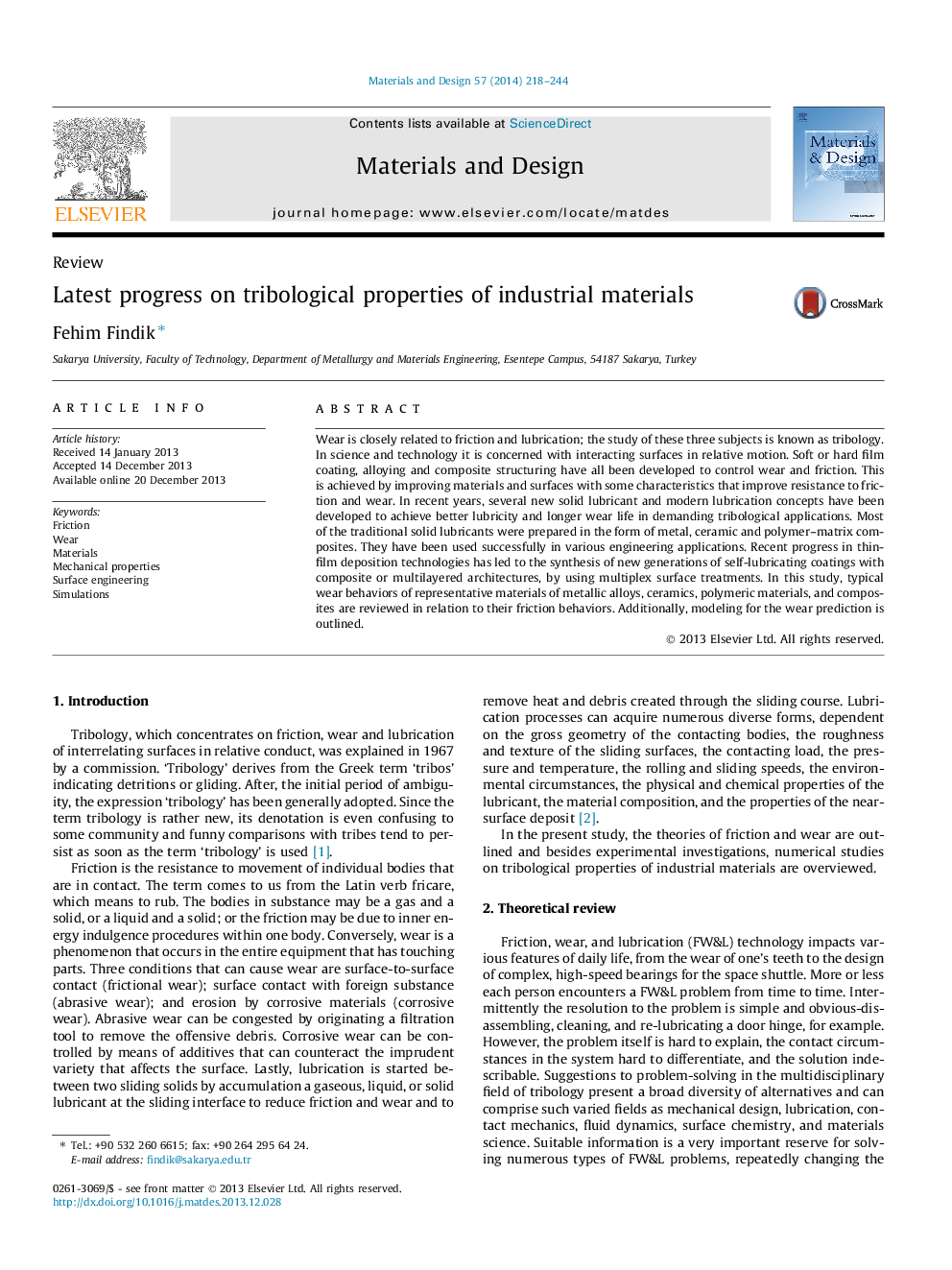| Article ID | Journal | Published Year | Pages | File Type |
|---|---|---|---|---|
| 829340 | Materials & Design (1980-2015) | 2014 | 27 Pages |
•Tinalox coated SS samples gave greatest performance via less worn surfaces due to harder nitrides.•Intermetallic particles added to Al-Si alloy, and wear abridged because of grain refinement.•Mechanical properties of metallic glasses better during structural relaxation due to heat treatment.•Polymer based composites demonstrated improved wear performance comparing to the polymers.•Metallic-based composites illustrated inferior wear comparing to pure metals.
Wear is closely related to friction and lubrication; the study of these three subjects is known as tribology. In science and technology it is concerned with interacting surfaces in relative motion. Soft or hard film coating, alloying and composite structuring have all been developed to control wear and friction. This is achieved by improving materials and surfaces with some characteristics that improve resistance to friction and wear. In recent years, several new solid lubricant and modern lubrication concepts have been developed to achieve better lubricity and longer wear life in demanding tribological applications. Most of the traditional solid lubricants were prepared in the form of metal, ceramic and polymer–matrix composites. They have been used successfully in various engineering applications. Recent progress in thin-film deposition technologies has led to the synthesis of new generations of self-lubricating coatings with composite or multilayered architectures, by using multiplex surface treatments. In this study, typical wear behaviors of representative materials of metallic alloys, ceramics, polymeric materials, and composites are reviewed in relation to their friction behaviors. Additionally, modeling for the wear prediction is outlined.
